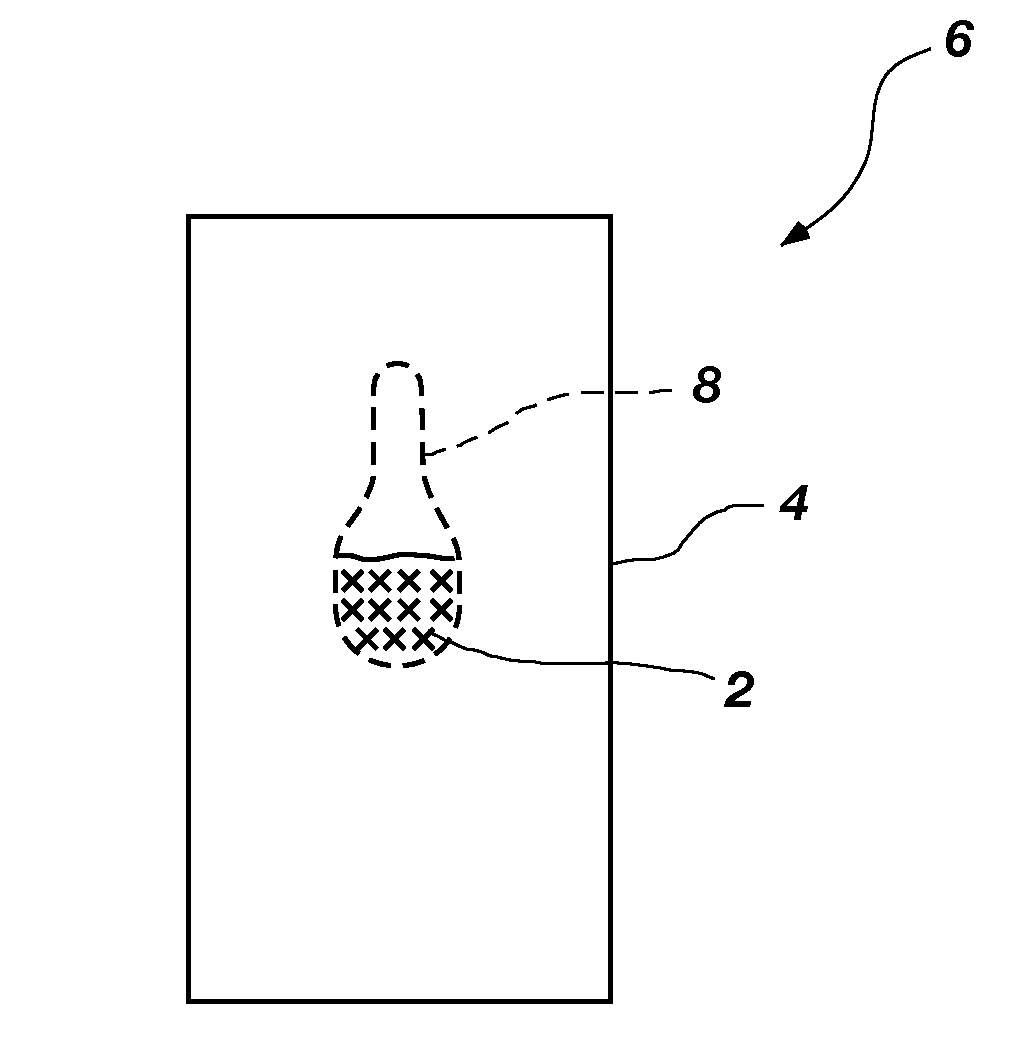Taggants, method for forming a taggant, and a method for detecting an object
a technology of taggant and taggant, which is applied in the field of taggant, method for forming taggant, and method for detecting object, can solve the problems of static release profile of pft, insufficient control of release profile for many potential operations, and inability to release pft in a time-dependent manner
- Summary
- Abstract
- Description
- Claims
- Application Information
AI Technical Summary
Problems solved by technology
Method used
Image
Examples
example 1
[0088]The permeability of perfluoro(1,3-dimethylcyclohexane) through various polyphosphazene compounds was determined by calculating its diffusion coefficient through a membrane formed from the indicated polyphosphazene compound. The polyphosphazene compound used to form the membranes had a molecular weight of from about 900,000 Daltons to about 1,100,000 Daltons. To determine the diffusion coefficients, a first side of the membrane was exposed to pure helium. A valve was opened to expose the membrane to a known concentration of the perfluoro(1,3-dimethylcyclohexane) in a carrier stream of helium. The presence of perfluoro(1,3-dimethylcyclohexane) was detected by Membrane Introduction Mass Spectrometry (MIMS) as the perfluoro(1,3-dimethylcyclohexane) penetrated the membrane. The detection signal leveled off rapidly as steady state permeation of the perfluoro(1,3-dimethyl-cyclohexane) through the membrane was achieved. The values for the whole curve were normalized against the steady...
example 2
[0090]The permeability of perfluoro(1,3-dimethylcyclohexane) through membranes formed from PDMS, a silicone rubber, and poly(bis trifluoroethoxy)phosphazene (“TFE”), a polyphosphazene compound, was determined by calculating the diffusion coefficients as previously described. The permeability of perfluoro(1,3-dimethylcyclohexane) was tested using a concentration of 5111 ppm (concentration 1) and 920 ppm (concentration 2). The diffusion coefficients (y axis) were normalized to 1. As shown in FIG. 6, perfluoro(1,3-dimethylcyclo-hexane) passed more quickly through the PDMS membrane than through the poly(bis trifluoroethoxy)phosphazene membrane.
example 3
[0091]The diffusion constants of eight perfluorocarbon compounds through each of PDMS and poly(bis trifluoroethoxy)phosphazene were determined. The diffusion constants are shown in Table 2.
TABLE 2Diffusion constants for various perfluorocarbon compounds throughPDMS and poly(bis trifluoroethoxy)phosphazene.poly(bis trifluoro-PDMSethoxy)phosphazenePerfluorocarbon compound(cm2 / sec)(cm2 / sec)Perfluorohexane5.14E−071.30E−08Perfluorodimethylbutane5.33E−078.84E−09Perfluorocyclohexane2.52E−078.49E−09Perfluoromethylcyclohexane4.55E−076.06E−09Perfluoro(1,2-dimethylcyclohexane)4.15E−073.76E−09Perfluoro(1,3-dimethylcyclohexane)4.38E−074.79E−09Perfluoro(1,3,5-trifluorocyclohexane)3.98E−073.02E−09Perfluorodecalin3.52E−073.04E−09
As shown by the diffusion coefficients, the perfluorocarbon compounds passed more quickly through the PDMS than through the poly(bis trifluoroethoxy)phosphazene.
PUM
| Property | Measurement | Unit |
|---|---|---|
| Volume | aaaaa | aaaaa |
| Volume | aaaaa | aaaaa |
| Volume | aaaaa | aaaaa |
Abstract
Description
Claims
Application Information
 Login to View More
Login to View More - R&D
- Intellectual Property
- Life Sciences
- Materials
- Tech Scout
- Unparalleled Data Quality
- Higher Quality Content
- 60% Fewer Hallucinations
Browse by: Latest US Patents, China's latest patents, Technical Efficacy Thesaurus, Application Domain, Technology Topic, Popular Technical Reports.
© 2025 PatSnap. All rights reserved.Legal|Privacy policy|Modern Slavery Act Transparency Statement|Sitemap|About US| Contact US: help@patsnap.com



